
views
- Unmarked police cars have special plates with numbers only, dark tinting, multiple radio antennas, a push bumper, and there may be out-of-place lights on the grill.
- An undercover officer often looks oddly well-groomed. They might have an oversized jacket, brand-new clothes, cargo pants, and a gun hidden beneath their pants.
- Watch out for any stranger who seems oddly friendly or doesn’t fit in with the setting. Look for inconsistencies in behavior but avoid drawing attention to them.
Identifying an Unmarked Police Car
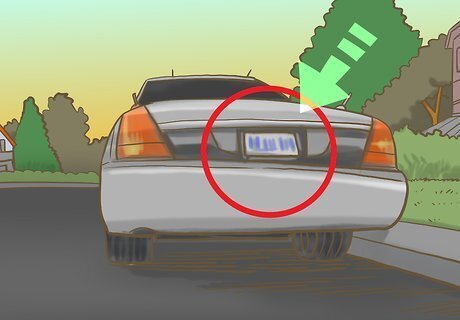
Look for nondescript plates on the back of the vehicle. Unmarked police cars are often fitted with special municipal plates. Unlike ordinary license plates, which include a combination of letters and numbers, municipal plates typically only feature a short string of numbers. This could be enough to make them stand out at a glance. In some cases, municipal plates may be stamped with the letters “MU” at the end. Some unmarked cop cars are even required to have tags bearing the name of the local police department.Tip: The Ford Crown Victoria, FPIU, Ford F-150 Responder, Dodge Charger Pursuit, Chevrolet Impala, and Chevy Tahoe are among the most common vehicles used by police departments throughout North America.
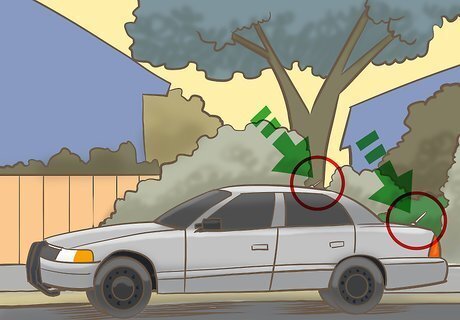
Check the roof or trunk for a suspicious number of radio antennas. Cops have to stay in constant communication with headquarters, as well as other officers. Unfortunately for them, there's no good way to hide the abundance of antennas needed to make this possible. A cop car may have as many as 4-5 separate antennas, whereas most consumer vehicles only have 1 or 2. Keep in mind that retractable power antennas may not be visible at all times. Nowadays, more and more cop cars are being outfitted with puck antennas, which are short and round and made to blend in with the car's paint job. These can be harder to catch, but they still have a fairly distinct look.
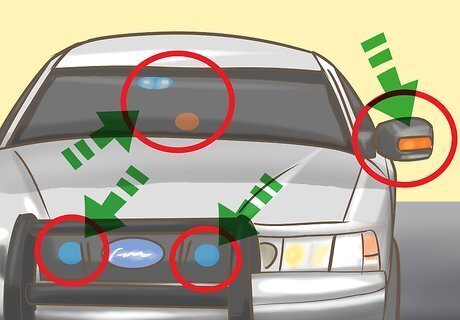
Pinpoint out-of-place lights on the grill or side mirrors. Examine the front end of the vehicle and see if you can make out a row of flashers set between the headlights. Emergency lights may be accompanied by searchlights on the side mirrors. Both of these features are a dead giveaway of a cop car in disguise. If you don't see a light bar on the grill, take a peek at the bottom of the rear windshield, just above the back row of seats. It may be in one place and not the other. It's not legal for civilians to drive cars equipped with emergency lights, so if you see them, you can be sure that there's an officer behind the wheel.
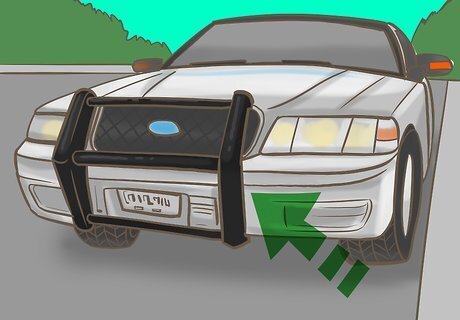
See if the car has a push bumper. A push bumper (also known as a “bullbar,” “crashbar,” or “bumpbar”) is a cage-like device that goes over the front bumper of a vehicle to prevent damage in the event of a collision and make it easier to force other vehicles off of the road. They're a staple of police-issue vehicles, and may be found on any make, model, or style of car. The majority of civilian vehicles with push bumpers are larger models, such as Hummers, Jeeps, and pickup trucks. Police departments, on the other hand, are known to install them on sedans, owing to their superior speed and maneuverability.
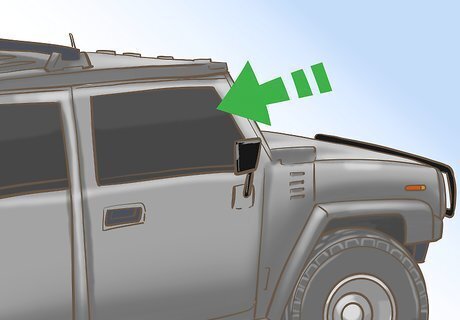
Expect to find dark window tinting. It's not uncommon to pass a car with tinted windows—many upscale vehicles even include it as a standard feature. The windows of a police car will usually be much darker, though, particularly towards the front. The point is to make it harder for other drivers to see inside, but it has the unintended effect of making the car itself more noticeable. The presence of tinted windows alone isn't enough to be sure that a given vehicle is being driven by a police officer, but it can be a major tell when taken with other clues.
Analyzing a Suspected Officer's Clothing
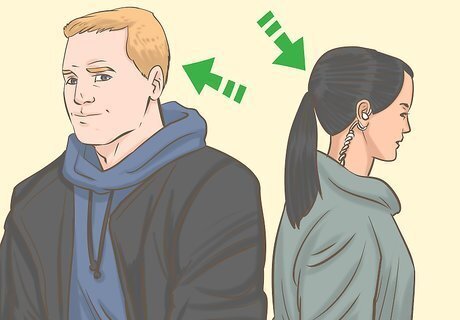
Look for suspiciously neat or well-groomed hairstyles. You can get your first hint as to whether or not someone is an undercover cop with a quick glance. Shaved heads, clean side parts, and military burs or “high-and-tight” haircuts are all common for male officers. Similarly, female officers often sport ponytails, low buns, or close-cropped bobs in order to keep their hair out of their faces. Most police departments insist that their officers adhere to high grooming standards—higher than the average person on the street. Hairstyle alone isn't enough to go on. It's not unusual for cops in deep cover assignments to grow out their head and facial hair to make themselves less likely to be identified.

Take note if the person is wearing an oversized jacket. Long or bulky outerwear makes it easier for cops to carry all the tools and equipment they need without attracting attention. If the person is wearing a rugged work jacket, ¾ length coat, or plush windbreaker, there's a chance that there's a pair of handcuffs in one of the pockets. Keeping one or both hands stuffed inside their jacket pockets can also be an indication that there's something in there they want to be able to grab in a hurry.
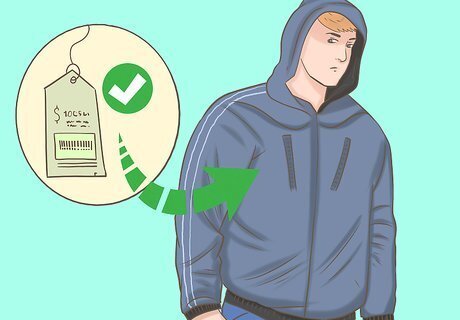
Keep an eye out for brand-new hoodies or other casual activewear. Undercover cops frequently deck themselves out with hooded sweatshirts, warm-up jackets, and other sports-themed apparel in an effort to blend in with the crowd. While none of these items are suspicious on their own, they can look out of place when paired with other, less casual accessories. Hoodies are especially popular, as they allow officers to cover their heads and remain inconspicuous. Making out the name or logo of a generic store brand on an article of clothing (such as Mossimo, Merona, or And1), should only strengthen your suspicion.Tip: Undercover cops sometimes buy cheap clothes off the rack to wear on the job rather than risk being seen in their own. As a result, their “everyday” attire may have an awkward, unworn look.
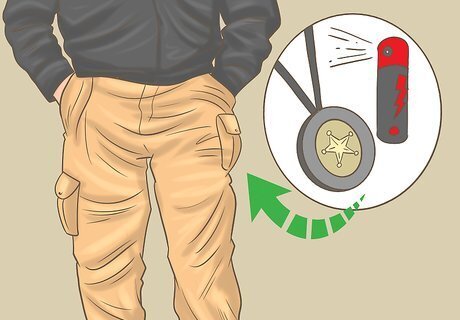
See if the person is wearing cargo pants or shorts. Like bulky jackets, bottoms with multiple, roomy pockets are part of many police officers' wardrobes because of the amount of practical storage they offer. These pockets may be used to hold items like a badge, flashlight, taser, pepper spray, backup handcuffs, or zip ties. An undercover officer's cargo pockets aren't just there for decoration—more often than not, they'll be full. By contrast, a careless cop might also make the mistake of wearing an expensive pair of jeans with other less fancy “show” garments.
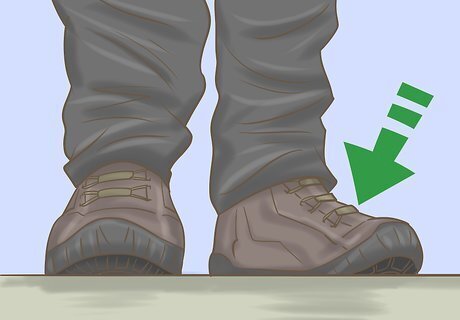
Check for drab military or hiking-style boots. If you've studied the person's outfit and still aren't sure what to make of them, look down. Cops tend to gravitate towards durable, heavy-duty types of footwear because of how much time they spend on foot. They might also be wearing chunky hiking sneakers or something similar. Police officers have a preference for neutral colors like black, brown, and gray, as they're much more low-profile than bright colors and flashy designs. It's not so much a matter of the shoes themselves as the way they're matched with other clothing and accessories. How many people do you know who rock tactical boots with a Chargers hoodie and khaki cargo pants?
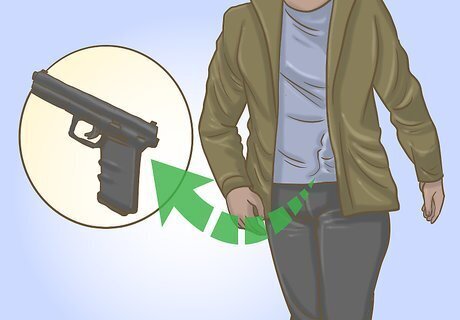
Watch for the outline of a gun beneath their pants or shirt. One alarming but surefire way to tell if someone who's acting a little funny is actually working undercover is to catch a glimpse of their sidearm under their clothes. The tell-tale shape of a gun will be easiest to detect when they're bending, leaning, or raising their arms. If you discover that the person you're talking to is concealing a firearm, it's wise not to say anything to them about it, whether they're a police officer or not.
Picking up on Unusual Behavior

Be wary of anyone you don't know who tries to earn your trust. If you have a run-in with a stranger who seems oddly friendly or inquisitive and your gut is telling you that there's something not quite right about the situation, listen to it. An undercover cop's whole job is to secretly sniff out information from civilians by pretending to be one of them. There's a difference between someone who's just trying to make small talk and someone who seems like they're after something. If you start to receive pointed questions, such as, “How old are you?” or “Do you know the person who's throwing this party?”, consider it a red flag.
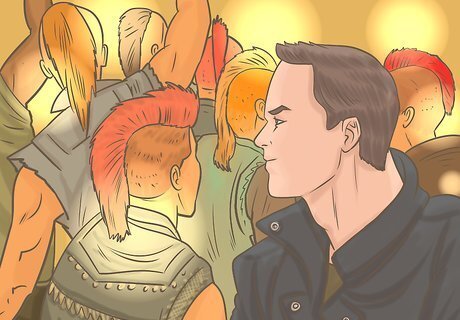
Pay attention to people who don't quite fit in in a particular setting. Scan the room and target anyone who stands out, then try put your finger on what's different about them. A middle-aged, tattoo-less guy with a buzz cut at a punk rock show might just enjoy loud music. But there's a chance he's there to bust a drug dealer, especially if you notice a distinct lack of headbanging going on. Ask yourself what it is about the person that sets them apart from everyone else around them: is it the way they look, the way they dress, or the way they're acting?Warning: There are no rules for what sorts of clothing, activities, or events people can enjoy. Make sure you have a valid reason for singling someone out—otherwise, you're just stereotyping.
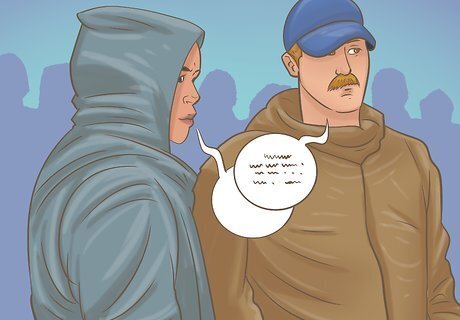
Zero in on mismatched pairs in public places. In some cases, an undercover officer will have a partner along with them on dangerous or high-stakes assignments. Since cops don't always get a say in who they're with, the two of them may look like something of an odd couple. They'll most likely stick close to one another, but might not do much chatting, or even acknowledge each other at all. Two people with significant age or cultural differences hanging out alone on a street corner, for instance, may be there for police reasons rather than personal ones.
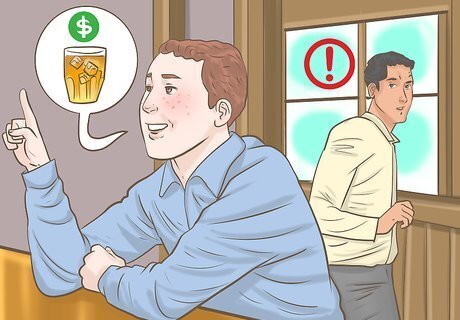
Question any habits or interests that don't add up. Turn a skeptical eye towards glaring inconsistencies that arise while you're observing or interacting with the person. They could be a crack in the facade. Overhearing a fresh-faced college student ordering an expensive brandy or witnessing a self-proclaimed environmentalist climbing behind the wheel of a gas guzzler should hopefully alert you that something is off. People are complex. Don't be so sure that someone is an cop just because they turn down a drink or tell you that their favorite TV show is The Wire.

Avoid drawing unnecessary attention to the person or yourself. If you think you've correctly identified an undercover cop, it's important that you don't say or do anything to interfere with their duties. Making a scene could put them in immediate danger or even get you hit with an obstruction of justice charge. Remember, they're there to enforce the law and protect you and the other civilians they mingle with. Some people believe that if you ask an undercover officer if they're a cop, they're obligated by law to tell you the truth. This doesn't actually work in real life, and you could cause trouble by posing the question at the wrong time or place.

















Comments
0 comment